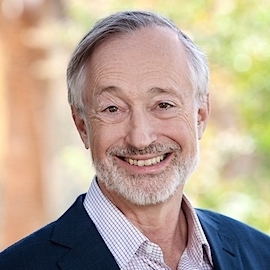Two new papers and two recent pictures on the FCC incentive auction, and the cornucopia of related results (including to auctions as knapsack problems) that Paul Milgrom and his colleagues have developed:
Incentive Auction Design Alternatives: A Simulation Study
KEVIN LEYTON-BROWN, University of British Columbia
PAUL MILGROM, Stanford University
NEIL NEWMAN, University of British Columbia
ILYA SEGAL, Stanford University
February 21, 2020,
Manuscript submitted for review to the 21st ACM Conference on Economics & Computation (EC’20)
Abstract: Over 13 months in 2016–17 the US Federal Communications Commission (FCC) conducted an “incentive auction” to repurpose radio spectrum from broadcast television to wireless internet. This paper revisits from a computational perspective the descending clock “reverse” auction used to procure broadcast rights. We investigate the quantitative significance of various aspects of the design by running extensive simulations, leveraging a reverse auction simulator and realistic models of bidder values.
************
Investment Incentives in Near-Optimal Mechanisms
Mohammad Akbarpour, Scott Duke Kominers, Shengwu Li and Paul Milgrom
February 25, 2020
Abstract: In a Vickrey auction, if one bidder has an option to invest to increase his value, the combined mechanism including investments is still fully optimal. In contrast, for any β < 1, we find that there exist monotone allocation rules that guarantee a fraction β of the allocative optimum in the worst case but such that the associated mechanism with investments by one bidder can lead to arbitrarily small fractions of the full optimum being achieved. We show that if a monotone allocation rule satisfies a new property called ARNIE and guarantees a fraction β of the allocative optimum, then in the equilibrium of the threshold auction game with investments, at least a fraction β of the full optimum is achieved. We also establish generalizations and a partial converse, and show that some well-known approximation algorithms satisfy the ARNIE property.
"ARNIE (“avoiding relevant negative investment externalities”)
...
"The definition of ARNIE is as follows: Given any value profile and feasibility constraints, an algorithm outputs some set of packed bidders. Suppose we raise the value of a packed bidder, or lower the value of an unpacked bidder, and then run the algorithm at the new value profile. The algorithm is ARNIE if the new packing, assessed at the new values, yields at least as much welfare as the old packing, assessed at the new values."
*********
And here are two photos I snapped during a seminar Paul gave two weeks ago...
See my previous posts containing "incentive auction".
Incentive Auction Design Alternatives: A Simulation Study
KEVIN LEYTON-BROWN, University of British Columbia
PAUL MILGROM, Stanford University
NEIL NEWMAN, University of British Columbia
ILYA SEGAL, Stanford University
February 21, 2020,
Manuscript submitted for review to the 21st ACM Conference on Economics & Computation (EC’20)
Abstract: Over 13 months in 2016–17 the US Federal Communications Commission (FCC) conducted an “incentive auction” to repurpose radio spectrum from broadcast television to wireless internet. This paper revisits from a computational perspective the descending clock “reverse” auction used to procure broadcast rights. We investigate the quantitative significance of various aspects of the design by running extensive simulations, leveraging a reverse auction simulator and realistic models of bidder values.
************
Investment Incentives in Near-Optimal Mechanisms
Mohammad Akbarpour, Scott Duke Kominers, Shengwu Li and Paul Milgrom
February 25, 2020
Abstract: In a Vickrey auction, if one bidder has an option to invest to increase his value, the combined mechanism including investments is still fully optimal. In contrast, for any β < 1, we find that there exist monotone allocation rules that guarantee a fraction β of the allocative optimum in the worst case but such that the associated mechanism with investments by one bidder can lead to arbitrarily small fractions of the full optimum being achieved. We show that if a monotone allocation rule satisfies a new property called ARNIE and guarantees a fraction β of the allocative optimum, then in the equilibrium of the threshold auction game with investments, at least a fraction β of the full optimum is achieved. We also establish generalizations and a partial converse, and show that some well-known approximation algorithms satisfy the ARNIE property.
"ARNIE (“avoiding relevant negative investment externalities”)
...
"The definition of ARNIE is as follows: Given any value profile and feasibility constraints, an algorithm outputs some set of packed bidders. Suppose we raise the value of a packed bidder, or lower the value of an unpacked bidder, and then run the algorithm at the new value profile. The algorithm is ARNIE if the new packing, assessed at the new values, yields at least as much welfare as the old packing, assessed at the new values."
*********
And here are two photos I snapped during a seminar Paul gave two weeks ago...
See my previous posts containing "incentive auction".
















